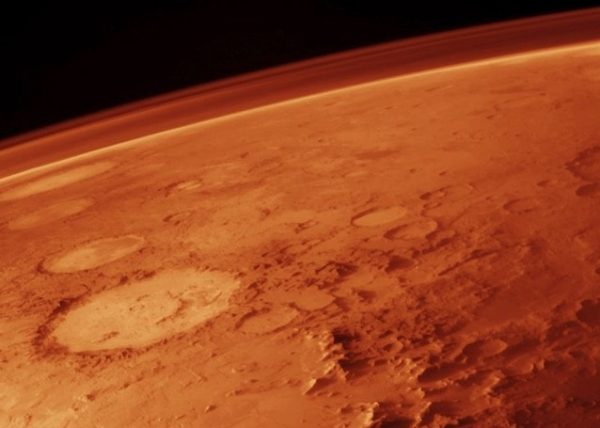In the late 1970s, two Viking robots sailed to Mars, pillaged the soil and burnt any traces of life they found.
That was never the plan, of course. When NASA first landed the twin spacecraft named Viking 1 and Viking 2 on the surface of Mars 40 years ago, scientists were ecstatic to finally start studying Martian soil for signs of organic (carbon-based) molecules that could prove the Red Planet was hospitable for life. It should’ve been a slam-dunk mission. The pockmarked face of Mars was constantly being pelted with tiny, carbon-rich meteorites, after all — detecting signs of that carbon was thought to have been a sure thing.
But it wasn’t. After half a decade of studying the planet, neither of the Viking landers could find any evidence of organic matter. Why not? NASA’s Curiosity rover confirmed the presence of organic molecules on Mars earlier this year, so what was Viking missing?
A new paper, published June 20 in the Journal of Geophysical Research: Planets, provides an explanation. The carbon was there all along, the researchers wrote; unfortunately, the Viking landers set it all on fire.
“A total of four [soil] samples were analyzed, each multiple times, by rapidly heating the sample to one of four temperature steps,” researchers from NASA’s Ames Research Center in California and the Atmosphere, Media, Spatial Observations Laboratory (LATMOS) in France, wrote in the new study.
The Vikings heated up their soil samples to a maximum temperature of 932 degrees Fahrenheit (500 degrees Celsius) to try and release any volatile organic compounds trapped within those samples. If there had been any carbon there, the traces should have been detectable in the soil’s vapor. So, why wasn’t it? According to the authors of the new study, there may have been something else in the soil that NASA didn’t bargain for — a hyperflammable fuel that accidentally burned the carbon to bits.
By Brandon Specktor – Full Story at Live Science



